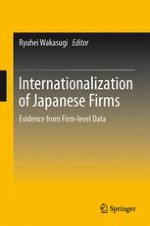2014 | OriginalPaper | Chapter
Foreign Direct Investment with Matching Frictions
Author : Hitoshi Sato
Published in: Internationalization of Japanese Firms
Publisher: Springer Japan
Activate our intelligent search to find suitable subject content or patents.
Select sections of text to find matching patents with Artificial Intelligence. powered by
Select sections of text to find additional relevant content using AI-assisted search. powered by
